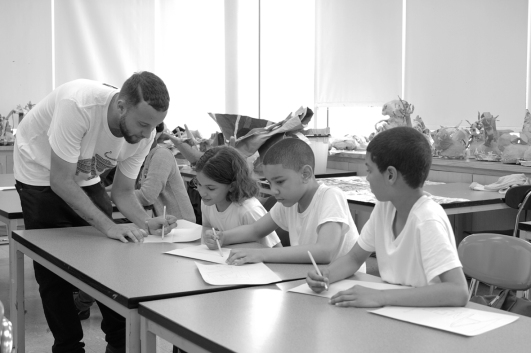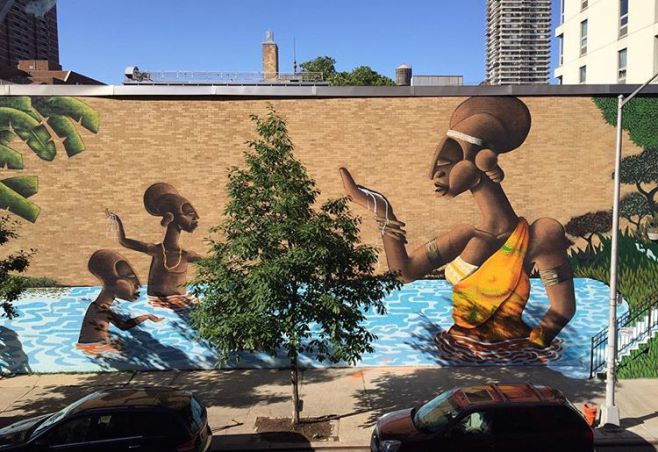A conversation with muralist Alexandre Keto
Who is Alexandre Keto? Tell the readers a little bit about the person behind the art.
I’m a guy who comes from a multiracial Brazilian family and I’ve been passionate about drawing since my childhood. Being a hyperactive child, drawing was what always made me calm down. I’m very connected to my family and love spending time with them, while I’m not working or travelling. I am interested in everything about social issues. When I read an article about it or even see the reality all over the world, it touches me and I keep it in my mind for days. I’m always thinking about what I personally can do to make things better. Cooking and travelling are my other passions.

That’s inspiring. Sometimes we forget that we always have a part to play, no matter how small, in making the world a better place. So, how would you describe your artistic style?
I’m a guy who makes art but I don’t necessarily consider myself an artist. I don’t like what comes along with being an artist like the scene or the ego…etc. I am more the social worker type who paints murals and canvases.

What I like the most about your art is the way you use it to draw attention to various social issues. It must have been quite a big step to move your work from a canvas to the streets. Can you talk a little bit about that and what you’ve learnt along the way?
My family always supported me and showed me love, but once I left the comfort of my home it wasn’t always like that. When I first started painting on the streets people stopped by and looked at me as a person. They would ask me questions, show interest and want to know more about me and my art. I realised that painting on the streets was a perfect way of communication and the perfect way to have a straight dialogue with society.

That’s true and it must be a great feeling to hear people say how much they adore your work. I really love seeing your murals pay homage to African culture. From the lifestyle, to the customs down to the clothing…it’s all there. When did you decide to create art in this particular way and why?
It happened organically. When I discovered the power of painting on the streets, I also saw the inequality in society. I started by doing graffiti in my own name, but it didn’t take long to change to the African style. I was much more into black and the African culture, because we didn’t get any information about it in schools. It all came together one point, when I started to use my art and my time to engage more with African culture. Yes, the main reason was to celebrate and recognise African heritage, but there are other things that come along with that. It’s also about representation. I wanted to value African culture instead of reinforcing other stereotypes. I have friends from all over the African continent, I’m always checking up on them and asking about their opinion of my work. I want to keep it straight with them and with everyone.

A large percentage of citizens in Brazil self-identify as black (or refer to themselves as Afro-Brazilians). There is too much going on right now in the world and a lot of the issues that are arising largely affect the black community. While some are more discussed than others it is clear that mental health isn’t getting the recognition it deserves. What advice can you give to young people struggling to be themselves?
It’s a very deep topic to talk about. I see things changing and people being more proud of themselves. On the other hand, racism is increasing and some people don’t value other people’s cultures. They don’t appreciate other people being proud of themselves. I think people shouldn’t be afraid to keep in touch with their heritage. People also shouldn’t give into negative representations of Africa or black culture in the media. Research about your history, stick together with your friends and read lots of books.
What do you want people to take away from your art?
To create a interesting conversations and to learn more about the continent called Africa.
What advice would you give to young artists who are trying to breakout into the industry?
Don’t worry about the industry, be yourself and see what happens. Things take time…a lifetime sometimes.

In an interview with NBC News you spoke about the hip hop movement that came to São Paulo and how it influenced your work. So, that’s got me wondering who are your favourite hip hop artists?
Dj Kool Herc, Dj Grandmaster Flash, Cope, Doze, Nas and Pharoahe Monch are some of the ones that I like the most!
Can you name three of your biggest inspirations?
Sebastião Salgado, Vik Muniz and Michael Jackson.
Is there a strategy/plan to where you decide to place your murals?
Not really, but I like to paint where I can interact and engage with communities.
Finally, where do you hope to see yourself in the next five years?
In a place where I will be more wiser, patient, sensible and connected with nature.

KEEP UP WITH ALEXANDRE KETO


